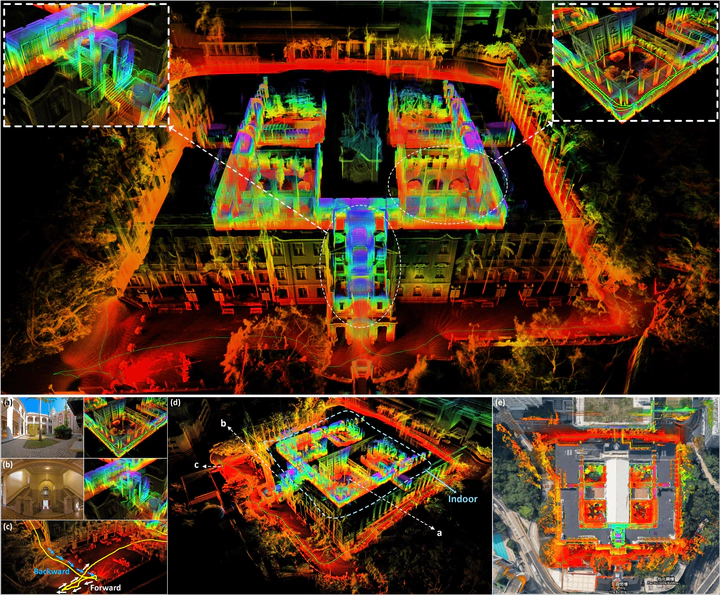R$^2$LIVE: A Robust, Real-time, LiDAR-Inertial-Visual tightly-coupled state Estimator and mapping
 r3live_cover
r3live_cover
Abstract
In this letter, we propose a robust, real-time tightly-coupled multi-sensor fusion framework, which fuses measurements from LiDAR, inertial sensor, and visual camera to achieve robust and accurate state estimation. Our proposed framework is composed of two parts: the filter-based odometry and factor graph optimization. To guarantee real-time performance, we estimate the state within the framework of error-state iterated Kalman-filter, and further improve the overall precision with our factor graph optimization. Taking advantage of measurements from all individual sensors, our algorithm is robust enough to various visual failure, LiDAR-degenerated scenarios, and is able to run in real time on an on-board computation platform, as shown by extensive experiments conducted in indoor, outdoor, and mixed environments of different scale (see attached video https://youtu.be/9lqRHmlN_MA). Moreover, the results show that our proposed framework can improve the accuracy of state-of-the-art LiDAR-inertial or visual-inertial odometry. To share our findings and to make contributions to the community, we open source our codes on our Github: https://github.com/hku-mars/r2live.
Introduction

R2LIVE is a robust, real-time tightly-coupled multi-sensor fusion framework, which fuses the measurement from the LiDAR, inertial sensor, visual camera to achieve robust, accurate state estimation. Taking advantage of measurement from all individual sensors, our algorithm is robust enough to various visual failure, LiDAR-degenerated scenarios, and is able to run in real time on an on-board computation platform, as shown by extensive experiments conducted in indoor, outdoor, and mixed environment of different scale.
 The reconstructed 3D maps of HKU main building are shown in (d), and the detail point cloud with the correspondence panorama images are shown in (a) and (b). (c) shows that our algorithm can close the loop by itself (returning the starting point) without any additional processing (e.g. loop closure). In (e), we merge our map with the satellite image to further examine the accuracy of our system.
The reconstructed 3D maps of HKU main building are shown in (d), and the detail point cloud with the correspondence panorama images are shown in (a) and (b). (c) shows that our algorithm can close the loop by itself (returning the starting point) without any additional processing (e.g. loop closure). In (e), we merge our map with the satellite image to further examine the accuracy of our system.
Our related video: our related video is now available on YouTube (click below images to open):
